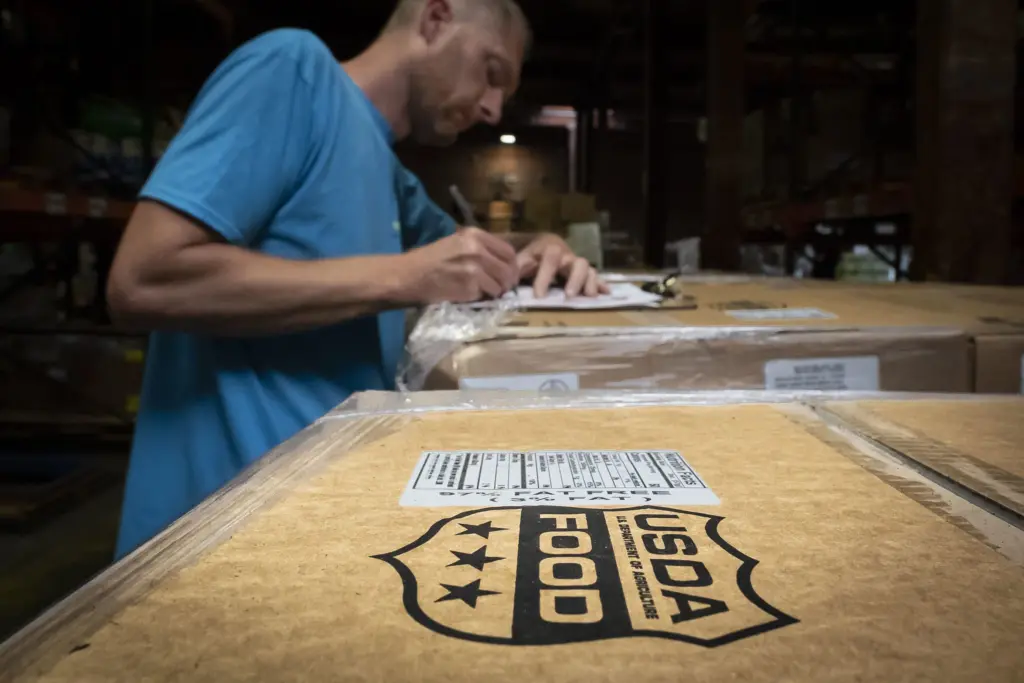Find food assistance in Idaho
Find food assistance near you on the Idaho Foodbank’s Food Locator at idahofoodbank.org. Click the “Get Help” button at the top of the website to find food assistance in Idaho by zip code. Listings on the site include the phone number, as well as the days and hours that the specific food pantries are open. Call ahead to confirm hours of operation.
BOISE, ID – This spring, the U.S. Department of Agriculture canceled thousands of orders, accounting for millions of pounds of food, meant for low-income Americans. Orders totaling more than 370,000 pounds of U.S.-produced meat, dairy and produce for Idaho food banks were canceled, according to USDA data obtained by ProPublica.
The deliveries had been scheduled between May and September under the USDA Emergency Food Assistance Program. Nationwide, the cuts totalled about $500 million for nearly 94 million pounds of food, ProPublica reported.
For Idaho, the canceled deliveries included cheese, turkey breast, dried cranberries, chicken, and pulled pork. The program is designed to provide nutritious, high-quality USDA foods for low-income residents and support U.S. agriculture markets.
Seven orders would have gone to food banks in North Idaho through the Community Action Partnership, which offers food assistance in Boundary, Kootenai, Shoshone, Benewah and Nez Perce counties. The deliveries would have included hundreds of cases of canned chicken, dried cranberries, and frozen chicken legs, the data shows.
Multiple orders of meat and cheese were scheduled to go to Boise Cold Storage on behalf of El-Ada Community Action Partnership. The canceled orders totaled approximately 200 pounds of food, including shredded cheese, turkey breast, chicken breast, pork chops, chicken legs and turkey breast deli meat.
Food banks in Lewiston and Pocatello also had cases of pork and turkey that halted under the action.
The food banks affected by the order cancellations could not be reached for comment.
Products delivered through the program are some of the most expensive and difficult for food banks to keep in stock, ProPublica reported.
There may be additional strain on food banks as the federal government shutdown continues because the federal Supplemental Nutrition Assistance Program, or SNAP, has depleted its funding until Congress renews it. The Idaho Department of Health and Welfare announced last week it will pause its SNAP program, previously known as food stamps, in November.
There are more than 130,000 Idahoans who use SNAP food assistance.
The Emergency Food Assistance Program, known as TEFAP, was first authorized by Congress in 1981 to purchase farmers’ surplus food and distribute it to Americans in need. In 2018, under the first Donald Trump administration, funds were added to the program to help farmers dealing with tariffs amid trade disputes, ProPublica reported.
Under the current Trump administration, the additional funding was cut and characterized as a Biden-era slush fund.”
U.S. Secretary of Agriculture Brooke L. Rollins in August announced the department would purchase up to $230 million in fresh seafood, fruits and vegetables from American producers for food assistance programs, including The Emergency Food Assistance Program.
Idaho Capital Sun is part of States Newsroom, a nonprofit news network supported by grants and a coalition of donors as a 501c(3) public charity. Idaho Capital Sun maintains editorial independence. Contact Editor Christina Lords for questions: info@idahocapitalsun.com.





